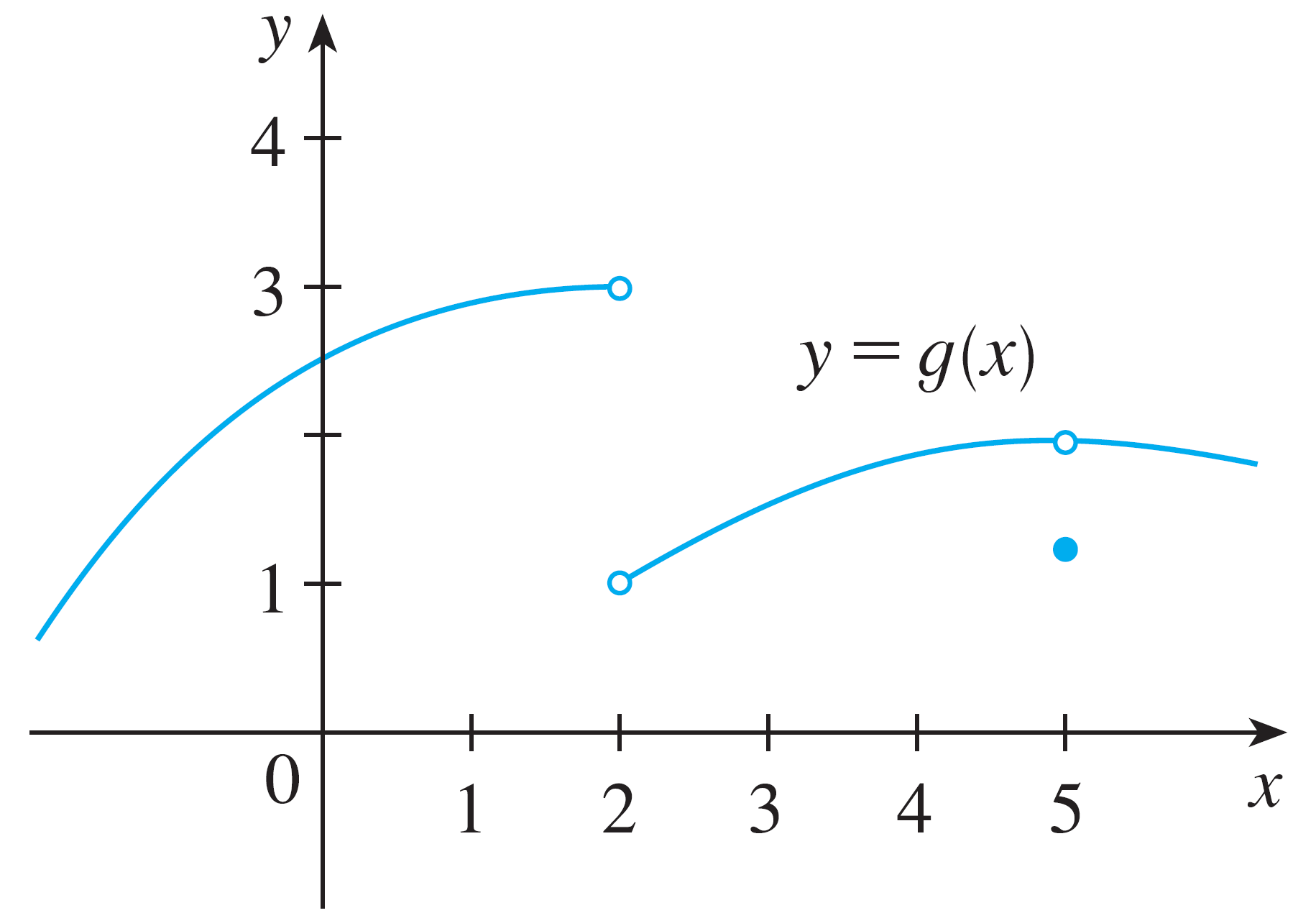2.3: Limits of Functions at Finite Numbers
In this section, instead of looking at \[\lim_{x\rightarrow\infty} f(x)\] we are interested in \[\lim_{x\rightarrow a} f(x)\]
Goals:
- Define the limit of a function
- Describe a tool for calculating the limit of a function.
- Understand when a limit exists and what the graph looks like.
- Describe pitfalls with this method.
The Table Method
There are usually three ways to find limits:
- Make a table of values, see what $f(x)$ is approaching
- Look at the graph
- Limit laws
This section develops our skill with #1 and #2. Next section looks at #3.
Suppose $f(x)$ is defined when $x$ is near the number $a$. Then we write \[\lim_{x\rightarrow a} f(x) = L\] if we can make the values of $f(x)$ arbitrarily close to $L$ by taking $x$ sufficiently close to $a$ but never, ever $a$ itself.
I think about it like this: the heights $f(x)$ can be made as close to $L$ as possible when you move $x$ close to $a$ but never $a$ itself.
This results in three possible graphs: 
Our first tool for finding limits is called the table method.
Create two tables that samples $x$ values to the left and right of $a$ but never $a$. Do not plug in $a$!!!!
Then see what the values of $f(x)$ are approaching. If both tables agree then the limit exists.
- $\displaystyle\lim_{x\rightarrow 1} \dfrac{x-1}{x^2 - 1}$
- $\displaystyle\lim_{x\rightarrow 1} g(x)$ where \[g(x) = \begin{cases} \dfrac{x-1}{x^2 - 1} & x \neq 1 \\ 2 & x = 1 \end{cases}\]
- $\displaystyle \lim_{x\rightarrow 0} \dfrac{\sin x}{x}$
- $\displaystyle\lim_{x\rightarrow 0} \left(x^3 + \dfrac{\cos 5x}{10000}\right)$
These examples show that the table method has a big pitfall: potential inaccuracy if you don't pick $x$ close enough to $a$.
However, the left and the right table can be represented in limit notation.
One-Sided Limits
The function $f$ has the right-hand limit $L$ as $x\rightarrow a$ from the right, written \[\lim_{x\rightarrow a^+} f(x) = L\] if $f(x)$ can be made close to $L$ as we please by taking $x$ sufficiently close to and to the right of $a$.
Similarly, the function $f$ has the left-hand limit $L$ as $x\rightarrow a$ from the left, written \[\lim_{x\rightarrow a^-} f(x) = L\] if $f(x)$ can be made close to $L$ as we please by taking $x$ sufficiently close to and to the left of $a$.
If left-and right-hand limits agree, the limit exists. This is equivalent to both tables agreeing. This idea is summarized as:
This theorem is very important. If left- and right-hand limits disagree, the limit does not exist.
The Graph Method
Limits can also be seen on the graph: look at what the heights of the function are approaching on both sides of $x = a$.
 Determine if the following exist. If they do, find the value.
Determine if the following exist. If they do, find the value.
- $\displaystyle\lim_{x\rightarrow2^-} g(x)$
- $\displaystyle\lim_{x\rightarrow2^+} g(x)$
- $\displaystyle\lim_{x\rightarrow2} g(x)$
- $\displaystyle\lim_{x\rightarrow5^-} g(x)$
- $\displaystyle\lim_{x\rightarrow5^+} g(x)$
- $\displaystyle\lim_{x\rightarrow5} g(x)$
- $f(2)$
- $f(5)$
Infinite Limits
If $\lim_{x\rightarrow a}f(x) = -\infty$, then $f(x)$ is decreasing without bound.
These conditions are equivalent to the existence of a vertical asymptote.
The definition also applies to left- and right-hand limits.